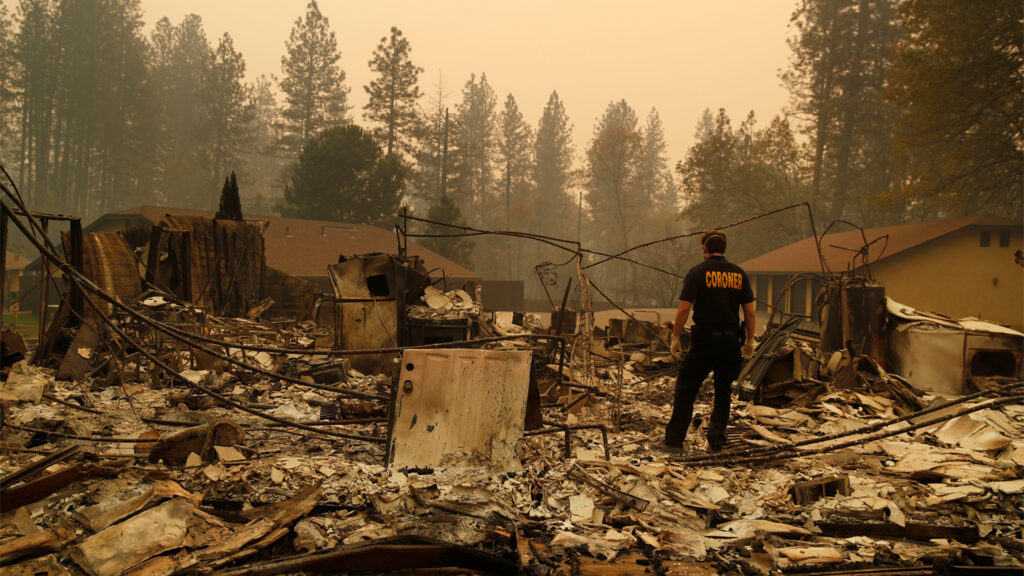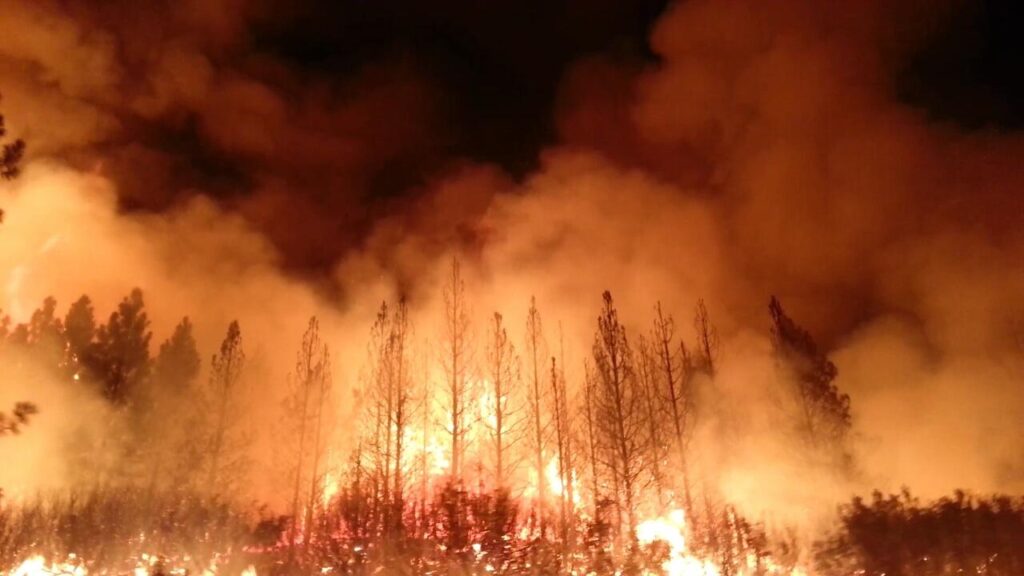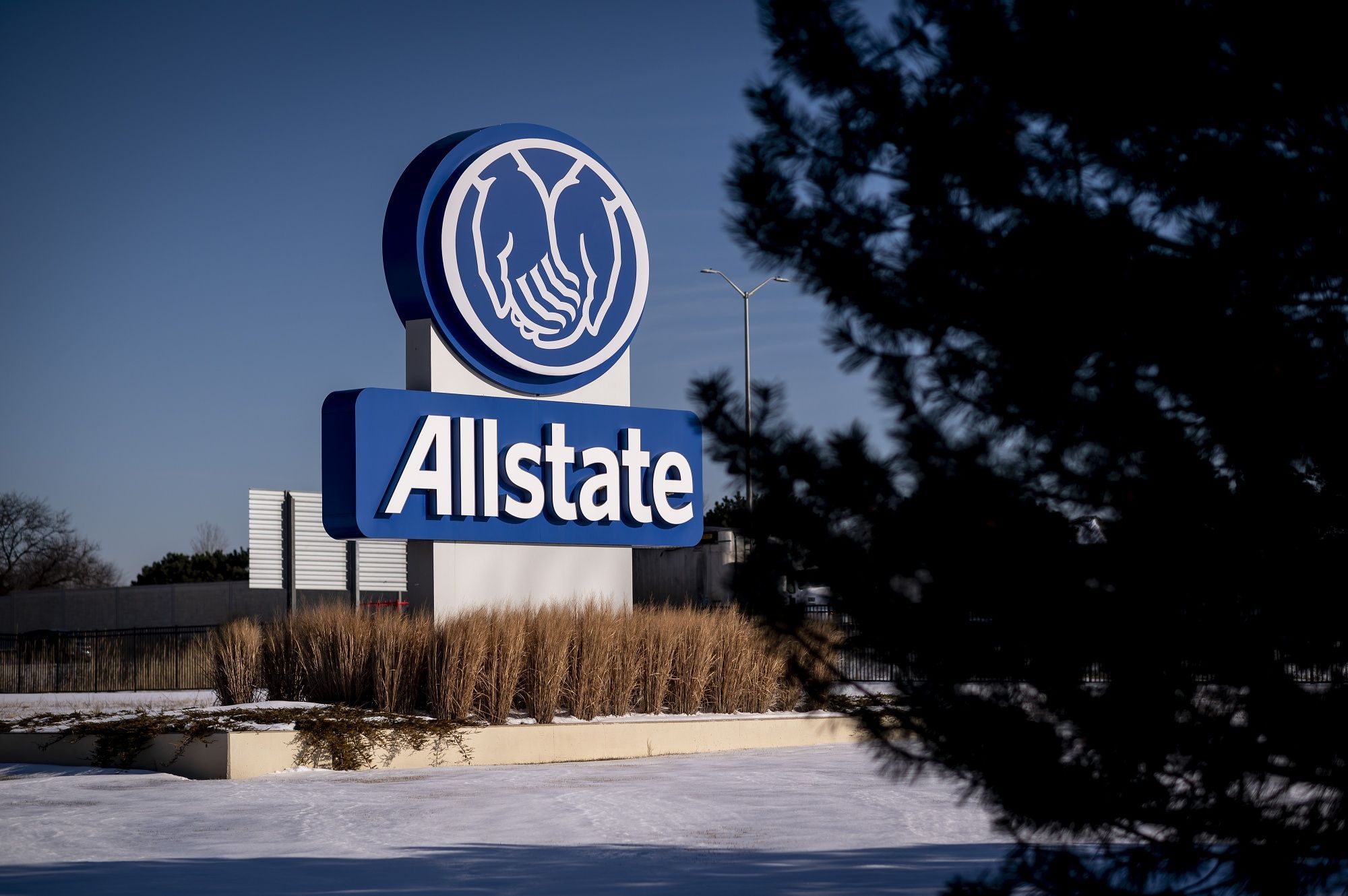For the vast majority of people, buying a house is the biggest investment they’ll make in their lifetime. And for many decades, homeowners’ insurance has been the best way to protect that investment.
However, for the residents of California, the ability to protect their biggest asset in the face of natural disaster has diminished dramatically over the past 24 months, with 10 leading insurers exiting the state – or, as in the case of AllState, pausing new policies until further notice.
A case study outlined in a recent report by Fortune, outlines the problem at the customer level. It states: “Heidi Lange was one of the first to rebuild her home after the catastrophic 2018 wildfire that devastated much of the town of Paradise, California, including her property.
“Following the fire, Lange experienced a divorce that left her with just half of the insurance payout, but she managed her finances wisely and invested in upgrades such as stucco siding and a metal roof to enhance fire resistance in her new home. She believed the worst was behind her. However, Lange was taken aback when, after nearly four years in the same home, she learned her annual home insurance premium would surge significantly this month — from US$1,200 to $9,750.”
There is currently only one player left in the game offering protection now – the state insurer, FAIR Plan – which according to recent reports, has been; “overwhelmed by a surge of new policyholders and would need to impose charges on millions of insurance policies of varying types throughout the state after a major wildfire.”

Multiple challenges have led to the insurance exodus
Though some organisations have not stated their reasons for withdrawal, other companies have attributed their challenges to increased wildfire risk, inflation-driven increases in reconstruction costs, rising reinsurance prices to strengthen their balance sheets and shield against disasters, and outdated state regulations.
In May of 2023, State Farm issued the following comments: “State Farm General Insurance Company made this decision due to historic increases in construction costs outpacing inflation, rapidly growing catastrophe exposure, and a challenging reinsurance market.
“We take seriously our responsibility to manage risk. We recognise the governor’s administration, legislators and the California department of insurance (CDI) for their wildfire loss mitigation efforts. We pledge to work constructively with the CDI and policymakers to help build market capacity in California. However, it’s necessary to take these actions now to improve the company’s financial strength.”
A question of data vs regulation
According to the Insurance Information Institute (Triple-I), California’s homeowners’ insurers paid out more than twice as much in claims and expenses as they collected in premiums in both 2017 and 2018. This has left a lasting impact on the market conditions in 2023.
“Insurers have earned healthy underwriting profits on their homeowners insurance business in all but two of the 10 years between 2013 and 2022,” states Triple-I’s report, Proposition 103 and California’s Risk Crisis. “However, the claims and expenses paid in 2017 and 2018—due largely to wildfire-related losses—were so extreme that the average combined ratio for the period was 108.1.”
The same report shows that the combined ratio for California’s homeowners’ insurers was 241.9 in 2017 and 213.4 in 2018, using data from AM Best.
The Issues Brief explains that to properly set and price insurance coverage, insurers need to be able to set premium rates based on future expectations. A few years with major disasters can wipe out several years of profits from underwriting and reduce the policyholder surplus if rates are not increased.
Unlike other states, California’s homeowners’ insurers cannot price risk based on future expectations and must use only past data because of regulations set by voters in Proposition 103 in 1988. Policyholder surplus is the remaining amount after an insurer subtracts its liabilities from its assets and acts as a safety net for policyholders in case of unexpected situations.
Market pessimism regarding solutions
Furthermore, industry forecasts on the situation remain painfully pessimistic. In a recent poll run by Insurtech Insights, a mere 28% of respondents said they thought a solution for California’s residents is on the way, while 78% said there were no imminent answers on the horizon.
Jim Jensen, a retired property insurance expert who spent almost two decades with Church Mutual Insurance, commented on the situation, explaining how the insurance industry is shifting from Replacement Value (RV) coverage to Actual Cash Value (ACV) coverage for property insurance – and how the economic climate is contributing to the challenge.
He said: “Replacement Value coverage is quickly becoming a thing of the past. Actual Cash Value property insurance was the norm 50 years ago and will be the normal coverage for the future. People need to remember that ACV coverage ( replacement value minus depreciation = ACV) was the standard coverage type prior to the 1950’s. Insurance companies began investing their reserves in the stock market and offsetting claim losses with gains in the market.”
Jensen continued: “Some companies were able to offset costs by as much as 20% some years. Today market declines, inflation, weather related claims, increased labour costs, material shortages and lawsuits have driven costs higher. Many companies are now operating at a loss ratio of over 20%… they are consuming their reserves that took decades to accumulate. Every state is involved for various reasons. Rates must increase and coverage must be limited.”

Devastating impact on local economies
If homeowners can’t insure their assets, the value diminishes considerably, leaving households with negative equity on properties that can’t be sold on. Such situations have a direct impact on local economies, as commerce slows down and negatively impacts neighbourhoods in a number of ways. And while discussions about reducing various protection gaps are front and centre of most insurance provider’s strategies, the same cannot be said for California’s residents.
The threat of a natural catastrophe is higher than it’s ever been, too, thus adding to the pressured situation homeowners find themselves in. A report by broker Gallagher Re in July 2022, showed that the property catastrophe reinsurance rates rose by as much as 50% at a key July 1 renewal date, with states such as California and Florida increasingly hit by wildfires and hurricanes due in part to climate change.
Rosina Smith, Chief Product Officer at MIS (McKenzie Intelligence Services) a leader in event response for disaster relief and economic recovery, is responsible for the development of the company’s core product GEO (Global Events Observer) and the teams that ensure clients are gaining the maximum value from using it.

She regularly works with the market to drive adoption of event response solutions for the benefit of disaster insurance at large – this means not only working with MIS suppliers and clients but increasingly with other insurtechs and incumbent technology providers.
She says: “At one time, when someone referred to the protection gap, the first thing that sprung to mind was emerging markets. Unfortunately, with the backdrop of a steady stream of insurers removing themselves from the US market, the phrase now conjures up Florida, California, Louisiana – developed economies who have usually enjoyed an appropriate level of insurance capacity.”
From a disaster recovery perspective, Smith says MIS has witnessed customers being squeezed in both directions. “At the same time as coverage is reducing – be that carriers pulling out or simply limiting how much of any given risk they can write, we see stark warnings to expect an active 2024 US Hurricane Season, we see wildfires as likely as ever before and hail and SCS occurrences also prevalent.”
Smith points out that for individuals in these areas, while it seriously impacts their decision making when it comes to buying insurance, it goes much further, “and has a fundamental impact on their ability to consider other financial decisions such as buying/selling property. Not to mention that peace of mind which insurance brings!”
Regulation offering hope to homeowners
New regulations look set to address the home insurance market – although how swiftly this will happen is yet to be seen. State Insurance Commissioner Ricardo Lara’s efforts to address the home insurance market’s challenges include two key regulations, with more on the way.
The first regulation, announced in February, seeks to expedite rate review processes. Under state law, the Insurance Department has the authority to approve or reject insurers’ requests for premium increases. Insurers argue that the process has delayed the premium hikes they need to offset rising costs related to climate change risks and inflation.
The second regulation allows insurers to use catastrophe modelling — a method that combines historical data with projected risk and losses — along with other factors in determining their premiums. California is the last state to permit catastrophe modelling.
Insurance trade groups, which stand to gain the most from the new regulations, support Lara’s endorsement of catastrophe modelling and have generally expressed approval for his sustainable insurance strategy. However, they believe the first regulation is burdensome and may slow down rate reviews.
The benefits of catastrophe modelling include the ability to account for efforts by homeowners, communities, and governments to reduce wildfire risk. This includes considering the number and proximity of firefighters in specific areas.
Risk and response coordination
The plan has come under scrutiny from some areas – but currently, is the best solution on the table for residents facing a future without protection. Smith concedes that saying insurance is the answer to all the components of the protection gap is an overly simplistic approach – but it’s the most viable option right now.
She says: “In these sorts of territories, insurance has proven to be a sophisticated mechanism to drive the resilience of communities facing frequent natural disasters and so, it seems fitting that, with modification, it should continue to be a prominent solution.”
Smith explains that MIS is working with carriers as they collaborate with regulators and commissioning bodies to ensure that risks, rates, and response can be coordinated – and that increasingly, their solution is being used to drive risk decisions in underwriting.
However, she continues: “The issues are growing in complexity and disasters are showing no signs of slowing, exposure continues to concentrate in high risk areas and so, by supporting our carriers to show the efforts they are putting in place to build underwriting and pricing solutions, deploy effective products and increase their operational response capabilities.”
No immediate solution for homeowners
Despite the dire situation for homeowners, there is some cause for hope. For example, AllState recently announced that it might reconsider lifting its pause on new policies for California’s homeowners, if certain circumstances are met.
Allstate was one of the first companies to cease issuing new policies in California in 2022 due to concerns over wildfire risks, the cost of rebuilding homes, and the increasing price of reinsurance, so far, it has continued to renew existing policies during this time.

But the company stated recently that it would consider offering new policies if home insurance rates can accurately reflect the cost of providing protection to consumers. The insurer said the importance of using advanced wildfire modelling and considering reinsurance costs.
The statement read: “Once home insurance rates fully reflect the cost of providing protection to consumers, we’ll be able to offer home insurance policies to more Californians with timely rate approvals, the use of our advanced wildfire modelling and reinsurance costs.”
However, such a move will probably require an even more drastic situation that the present one presents, says Smith, who concludes: “In short, unfortunately [there is no solution right now] – and in the meantime it’s the communities that bear the cost of inadequate insurance protection in a region. I think there will be driving activity that demonstrates the [current] position is not sustainable – perhaps this US hurricane season may be one such driver.”

Joanna England is an award-winning journalist and the Editor-in-Chief for Insurtech Insights. She has worked for 25 years in both the consumer and business space, and also spent 15 years in the Middle East, on national newspapers as well as leading events and lifestyle publications. Prior to Insurtech Insights, Joanna was the Editor-in-Chief for Fintech Magazine and Insurtech Digital. She was also listed by MPVR as one of the Top 30 journalist in Fintech and Insurtech in 2023.








